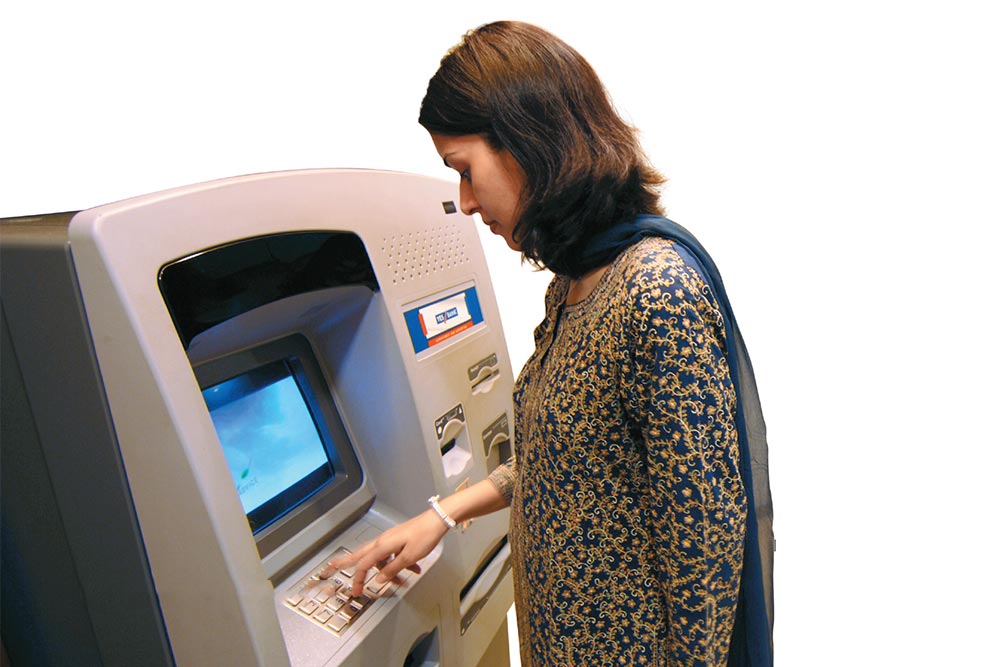The next time you withdraw cash from an automated teller machine (ATM), chances are you could be doing so from a White Label ATM (WLA). These are owned by non-banking companies but vend cash through a sponsor bank. With the RBI’s approval in February 2012 for rolling out WLAs, India joins many countries globally in opening up ATM networks to companies outside of the banking network.
The chief objective is to increase the reach of banking services to India’s rural and un-banked citizens. Of the 124,000 ATMs across India today, only 35% are in semi-urban and rural areas. PSU banks own 60% of all the ATMs in the country and with only 98 ATMs for a million people compared with 211 in China and 1,390 in the US, India ranks way below in ATM coverage. With 514.3 million transactions being done via ATMs, the RBI has put its weight behind WLAs as a faster route to make basic banking accessible to the masses.
Tata Communications Payment Solutions (TCPSL) was the first off the block in June with its Indicash WLA at Chandrapada village in Maharashtra’s Thane district. Since then, it has deployed 200 WLAs across Maharashtra, Karnataka and Kerala, with plans to take this number to 15,000 over the next three years. A spokesperson for TCPSL says that for every two WLAs installed in a semi-urban or rural area, it plans to have one in a tier 1 or tier 2 city.
Next in line is Muthoot Finance, better known for its gold loans business. Its first WLA is coming up in November in Delhi and Kerala with plans to roll out 9,000 WLAs in three years time. “We plan to install 1,000 WLAs in the first year of operations and there will be another 2,000 in the second year,” says KR Bijimon, chief general manager, Muthoot Finance. Muthoot is in talks with IndusInd Bank, Yes Bank and Federal Bank to be its sponsor bank for the project. Incidentally, Muthoot Finance and Tata Sons are among the 26 applicants to have applied for a banking licence, as well.
The cost of operating a WLA is not very different from a regular bank ATM, Bijimon points out. “The initial investment is ₹5-7 lakh per ATM with a running cost between ₹20,000 and ₹50,000 every month. Break-even is typically achieved at 80 transactions per day,” he says. TCPSL charges ₹15 for a cash transaction and ₹5 for a non-cash transaction at its WLA. Currently, five free transactions per month at ATMs of other banks are permitted but after the sixth transaction, around ₹17-18 for each transaction is charged by bank owning the ATM. More importantly, WLAs can generate additional revenues come from third-party advertising. “Unlike a bank, we are permitted to display third-party advertisements, which is a potential source of revenue,” says the TCPSL spokesperson.
But the success of WLAs will depend on how private and public sector banks take to the concept. Chitra Pandeya, senior president and country head (liabilities management, cards and direct banking), Yes Bank, agrees that new ATM operators could help address under-penetration of banking services, but WLAs can succeed only when banks open more accounts in rural markets. “ATM usage is purely dependent on the number of cards issued and this is something that needs to be resolved by all the banks together,” she points out.
There are other challenges too. “Certain markets will get crowded, and that is a bit of a concern,” says Ritesh Raj Saxena, head, savings accounts and direct banking, IndusInd Bank. Moreover, since WLA operators aren’t known brands in the banking space, a customer may not be as comfortable transacting here as at a bank ATM. “From our point of view, it opens up a new market for us, and that is of people who do not have bank accounts,” Saxena says. Indeed, with 80% of its ATMs in urban India, for IndusInd Bank, like others, WLAs could open up a whole new world of opportunity, faster than ever before.











